MainStreet de Las Vegas Districts
The architecture of Las Vegas reflects snapshots of its eras of development. The city has nine National Register historic districts, containing 200 “significant” structures and nearly 500 “contributing” structures. About 200 are listed “non-contributing.” Not every structure in an historic district has a designation. The rich historical legacy of Las Vegas is one of its greatest assets, but the responsibility of preserving this heritage carries with it great costs. Decades of economic stagnation have left the City with limited resources to preserve the physical, social, and cultural components that define the City’s historic spirit and character. MainStreet's Districts are as follows:
National Historic Districts in Las Vegas, NM:
• Las Vegas Plaza Historic District
• Railroad Avenue Historic District
• Bridge Street Historic District
• Douglas-Sixth Street Historic District
• El Distrito de las Escuelas
• Lincoln Park Historic District
• Library Park Historic District
• North New Town Historic District
• Old Town Residential Historic District
The Castañeda Hotel
The Castañeda was built in 1898 and was Fred Harvey’s first trackside hotel – the beginning of America’s first hospitality empire. The hotel is roughly 30,000 sq. ft., plus a 500-foot-long arcade wrapping the entire east facade and courtyard. There is also a basement under the north wing for kitchen supplies, under the south wing for boilers and mechanical equipment, and a huge attic, which was uninsulated and never used. The Santa Fe Railway mainline ran directly in front, connecting Las Vegas New Mexico to Chicago and Los Angeles.
The Castañeda is a historic Fred Harvey Hotel located in Las Vegas, New Mexico along Amtrak’s Southwest Chief line. The hotel opened in 1898 and closed in 1948. In 2014 it was purchased by Allan Affeldt and Tina Mion, the owners of La Posada Hotel in Winslow, Arizona. In 2018 Allan and Tina transferred title to their public-benefit 501-c3 corporation – the Winslow Arts Trust – though they remain responsible for the restoration, operation, and financing.
The Old Town Plaza & Las Escuelas District
The Old Town Plaza and Las Escuelas District
extends west from the river crossing at
Bridge St. to New Mexico Ave. west of the
Plaza, taking in several blocks of historic
residential neighborhoods associated with
the Plaza, as well as the judicial district.
Development in this portion of town is part
of the original settlement with the layout
based on the Law of the Indies (laws issued
by the Spanish Crown that regulated social,
political and economic life for its American
possessions). It grew around the roads
leaving the Plaza, and homes and businesses
were built right up to the streets or with
short setbacks. Construction of the buildings
that front Bridge St. and surround the Plaza
was in the late 1800s, predominantly built
of adobe and or stone with stucco or brick
finish. Many are deteriorating due to age
of materials and water damage caused by
inadequate roofing and drainage. Most of
this area is commercially zoned and under
the Cultural Historic Overlay Zone which
provides guidelines for historic preservation.
Primary uses include retail, with an emphasis
on tourism, community facilities such as
churches and institutions related to the
judicial complex. The Plaza Hotel, built in
1882, remodeled in the mid-1990s and
expanded in 2008 is a key anchor for this
area.
The adjacent residential area developed on
a very tight irregular lot layout is associated
with the agricultural uses and acequia system
of the past. Streets are narrow and irregular,
and on-street parking is limited. Construction
is primarily adobe and/or stone with stucco
finish. Most homes are older; many are
deteriorated or have a mix of additions
and add-ons. Zoning is predominately R-2
(multifamily residential) with scattered R-3
(combination single family.
Douglas Street & the New Town District
The New Town District extends east from
the river crossing at Bridge and includes the
commercial development fronting National
Ave., University Ave. and Douglas Ave.,
properties adjacent to the east bank of
the river and the residential neighborhood
between Douglas Ave. and Grand Ave. This
area was developed between the 1880s
and the 1920s on standard lots fronting a
grid of spacious streets. It contains a mix of
buildings that date from the 1880s through
the 1950s, many of which are historically
and architecturally significant. Construction
type includes one- to three-story, framed,
stone, brick or adobe commercial buildings
with a variety of stucco finishes and
retail fenestration. Zoning categories in
the commercial corridor are primarily
C-2 (Central Business District) and C-1
(Neighborhood Commercial). Uses include
businesses, professional offices, and financial
institutions that serve local needs, as well as
shops and galleries that cater to the tourist
trade. Zoning in the adjacent residential
areas is predominately R-2 (Multi-Family
Residential) with a few scattered sites with
R-1 (Single Family Residential) zoning.
Historic Railroad District
The Railroad District includes the area
between Grand Ave. and the railroad tracks
from the old roundhouse to National Ave.
one block north of the University Ave.
Overpass. This area began developing in the
1880s after the arrival of the railroad. Parcels
are laid out in a rectangular grid, with the
original survey of a single lot set at 25’x 150’.
Buildings are primarily one- and two-story
adobe and/or brick construction with stucco
or brick finish. Some of the buildings are
stabilized and rehabilitated, while others are
on the verge of irreversible collapse. There
are very few newer buildings except for a few
scattered mobile homes. The area has several
scattered vacant buildings and lots, and most
likely some brownfields associated with the
commercial rail uses of the past. The area is
primarily zoned C-3 (General Commercial),
although much of the area is in residential
use. Property fronting Grand Ave. and much
of Railroad Ave. contains commercial uses,
including retail, warehousing, manufacturing,
services and open yard storage. The recently
remodeled rail depot houses a visitor’s center
and welcomes Amtrak travelers twice a day.
Adjacent to the depot are several offices and
buildings.





